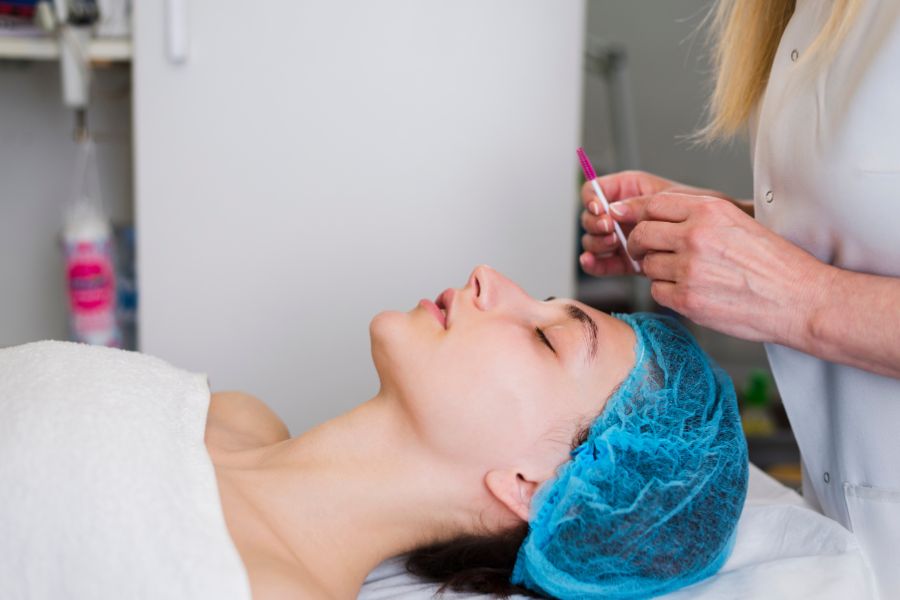- 79 Station Ln, Hornchurch, RM12 6JU
- 01708 607930
- info@charismabeautylounge.co.uk
Exosome therapy is a fast-rising regenerative treatment that promises measurable improvements in skin quality, scar reduction, and even hair health. If you’re considering it, knowing exactly what to expect before, during, and after a session will help you feel prepared and maximise your results.
Exosomes are tiny, naturally occurring vesicles released by cells that carry growth factors, proteins and genetic material (microRNA). They act as messengers between cells, instructing neighbouring cells to repair, rebuild and regenerate. In aesthetic medicine, clinicians harness exosomes—usually derived from cultured stem cells or platelet-rich plasma to deliver regenerative signals directly to the skin or scalp.
Unlike treatments that remove damaged tissue or temporarily fill wrinkles, exosome therapy aims to re-educate the skin’s own repair systems. The result is often an improvement in texture, tone, and elasticity that unfolds over weeks and months rather than days. Common benefits people seek include:
Exosome therapy is versatile and is considered for a wide range of indications. However, it’s better suited to some people than others.
A qualified clinician will assess your skin, medical history, and expectations to determine whether exosomes are the right option and whether they should be used alone or combined with other therapies.
Preparation is straightforward but essential. A good pretreatment routine reduces risk, improves comfort, and sets realistic expectations.
The delivery of exosomes depends on the clinic, the treatment goal (skin vs. scalp), and the chosen technique. The following outlines standard delivery methods and provides a step-by-step guide to the experience.
Knowing the typical immediate reactions helps reduce anxiety. Most effects are transient and expected.
If any worrying symptoms appear, contact the treating practitioner promptly.
Aftercare significantly affects comfort and outcomes. Follow these practical steps to support healing and maximise exosome efficacy.
Most people tolerate exosome therapy with minimal issues, but it helps to recognise common side effects and red flags.
Early contact with your clinician allows timely management—antibiotics or topical care can be prescribed if necessary.
Exosome therapy typically produces results that evolve, reflecting actual regenerative effects rather than instant cosmetic camouflage.
Treatment plans vary with the concern being treated and the delivery method.
Your practitioner will tailor the exact schedule to your skin’s response and clinical goals.
One of exosomes’ greatest strengths is their ability to integrate well into multi-modal skincare protocols. When appropriately used, combination treatments can enhance efficacy without increasing risk—if they’re timed intelligently.
If hair restoration is your aim, exosomes can be used to nourish the scalp and stimulate hair follicles. The delivery method is often microinjections into affected areas.
Exosome therapy is generally well-tolerated when prepared and administered under sterile, regulated conditions. Current evidence—from early clinical studies and growing real-world experience—supports improvements in skin texture, scar reduction, and stimulation of hair follicles. Important safety notes:
Always ask the clinic about product sourcing, batch testing, and adverse event reporting.
The cost depends on the region, clinic reputation, product quality, and whether exosomes are combined with other procedures. Typical considerations:
It helps to think of exosome therapy as an investment in long-term skin health rather than a one-off cosmetic fix.
To get the best from your exosome treatment, consider these practical tips:
Exosome therapy represents an exciting shift toward cellular-level skincare. It’s a great option for those seeking regenerative improvement—scar softening, texture correction, tone evenness, and even hair stimulation—without the downtime or risks associated with more aggressive surgical or thermal methods. The best outcomes are achieved when exosomes are delivered by trained professionals using high-quality products, following evidence-based protocols, and combined with sensible aftercare.
At Charisma Beauty Lounge, we specialise in professional exosome treatments designed to restore and rejuvenate your skin safely and effectively.
If you’re curious to explore integrated approaches that treat both scalp and skin, consider reading more about combined protocols such as Exosome hair & face, which outline dual-area strategies for comprehensive rejuvenation.
For final peace of mind, schedule a consultation with a qualified clinician who can assess your skin, explain realistic expectations, and recommend a personalised plan—because good outcomes begin with clear communication and careful planning.
Recent Posts




WhatsApp us
